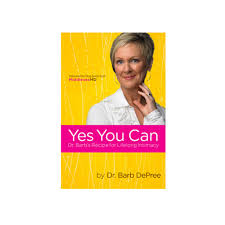
Sexual aids can increase your mojo in the bedroom
Interview with Barb DePree, MD, Founder of MiddlesexMD.
Dr. Mache Seibel: How did you get started in the area of sexual devices, sex toys and so forth?
Dr. Barb DePree: I’m a gynecologist. I’ve been in women’s health for 25 years, and about seven years ago I started a more focused practice around perimenopuase and menopause in women’s health. My intake questionnaire for patients included about eight questions involving sexual health. I became aware that many women have dissatisfaction around sexual health. They often wonder, “What else can I do? How can I make this better? How can I have an orgasm?” I found that referring patients for the use of a sex toy or sexual device was often part of my recommendation, and I was somewhat distressed to find how difficult it can be for women to be discreet and tasteful in their search for an appropriate device. Many sites have hundreds of sex toys on their website and the images aren’t at all how the patient sees herself.
MS: You were trying to bridge a gap between the raunchy, naughty side of sexual toys and something that women just needed to help them in their relationships and sexual health.
BD: Exactly. So, I created a website, more focused on sexual health. It’s not just toys and devices, but products that are nicely made, high quality, and fairly straightforward in their use. And rather than navigating 600 different toys, I have personally identified 20 toys with features they might enjoy and tell why they might select that product.
MS: Distilling things down to the most popular or the most useful as well as the ones you thought might work best and be most helpful to women. Take away the overwhelming smorgasbord of stuff. That also probably helps lower the awkwardness of looking because it’s finite, it’s packaged nicely and it’s discreet.
BD: Exactly. And also providing the information on why they’re changing, why an orgasm takes longer and is more difficult around menopause. Not just a product in isolation.
MS: How would a woman know it was time to consider something like that as opposed to just talking to her healthcare provider about vaginal hormonal therapy, or some other kind of a sexual counseling? All of these things may go together, but at what point does a woman think, “I might benefit from looking into one of these sex devices.”
BD: I think the women who are transitioning through menopause and not in a relationship and actively “engaging” their vagina, oftentimes are unaware of the changes that are happening there. So I will have a conversation, if they’re not in a relationship and not having sex. Oftentimes they’re not masturbating, so they’re really not aware that things are changing.
The vagina has a bit of “use it or lose it” phenomena. Sex in itself is a personal treatment for a healthy vagina and vulva. So I often remind women that incorporating a vibrator for keeping the vagina and vulva healthy is a great idea. A vibrator that you can actually insert into the vagina is a great idea during the act of sex to significantly increase blood supply.
MS: You could have your lover in bed with you or your “friend” in the nightstand.
How do you discuss the use of a vibrator with a woman? How do you instruct women to use a vibrator because some are not intended for insertion; some are for the outside, some are designed for either.
BD: There are some women who are not comfortable thinking about this, and many other women who are, but just hadn’t considered it. In my practice, I have samples of vibrators in the room so I can show them and have them hold them and turn on the device so they can understand how the intensity and sequencing of the vibration can be altered, and how they would lay it up against the clitoris, or insert it into the vagina. Having them there for women to see and feel is helpful. There are some lovely vibrator designs that have some very nice features. Showing them how it’s positioned so they might use it themselves or in a couple’s sex is very helpful.
MS: They can see how it works since vibrators have high, medium, and low settings; it’s not one speed for all. Becoming familiar with the device in that way creates a setting for exploration that hadn’t existed in the past.
BD: Yes, exactly. It is an interesting conversation to have with women. Very long ago I had a seventy-year old woman who had her first orgasm. Some texts make assumptions that women know their bodies well. It’s not necessarily the case.
MS: No.
BD: For many women it’s kind of enlightenment – a re-awakening time for them.
MS: One of my patients came to see me in her 80s after her husband passed away. She had a new partner and she needed surgery for her bladder. She said to me, “You know, doctor, my new boyfriend is interested in more than just my cooking.” We shouldn’t assume that people, no matter their age, aren’t going to be sexual beings. These devices can be helpful.
If a woman has her partner and she has the device, how do they use it? Can you provide an example?
BD: The most frequent reason women want to introduce a sex toy into couple’s sex is it just takes longer to achieve orgasm as they get older and maybe their hormonal status has changed. Many women get discouraged and feel, “I don’t have the time or energy for that, or he doesn’t have the time or energy for that.” So, help them understand that this could really be helping her enjoy the event. I just say there’s more pleasure in being intimate if you know your partner is fully enjoying it as well. The external vibrators for men can be pleasurable for men on their perineal body or scrotum as well. So it can be dually incorporated; women can use it against the clitoris during penetration or before or after. So, I think most couples are willing to explore how that might improve the situation at that time.
MS: Can you talk about some of the other devices besides vibrators? For instance, there are pillows for a woman to lie on that tilt the hips upward and into a better position to enjoy sex.
BD: Yes. On my website, MiddlesexMD.com we explore a variety of devices or tools to help women improve sexual function. We start with lubricants and moisturizers. For many women, there is additional dryness, so having more moisture is going to make sex more comfortable or pleasurable; and there’s a difference between moisturizers and lubricants. Helping women understand what their difference might be allows them to make the event more pleasurable and comfortable.
MS: Moisturizers keep the vagina moister all the time and lubricants are more on an as-needed basis.
BD: Yes. Moisturizers are used two to three times a week ongoing; and lubricants would be used episodically at the time of sex. We do include some pillows as you mentioned for help with positioning because we know low back pain and stiff knees and other things can actually make positioning uncomfortable. When you think about the positioning required to have sex, it can be more difficult for many couples, either or both partners, so some additional support could be beneficial. We do candles that burn into massage oil. Touch is one of the most important sensations and in many ways and affects our interactions with others.
MS: How is the candle used?
BD: The candles actually pool the massage oil in the candle and then you can pour it out onto your partner’s skin. They’re designed so they’re not too warm; they go from a solid to a liquid you can then use as a massage product.
MS: Some oils like coconut oil turns liquid pretty easily, so some things turn from solid to liquid in a narrow range and can liquefy and rubbed on as a sensual enhancement.
BD: Yes. We provide some books and DVDs trying to not only educate but also add some sensuality to reading or the visual cues that are incorporated into being sexual. We offer pelvic floor tools such as Fifty Shades of Grey or Ben Wa balls that can improve response or orgasm. Orgasm really is just pelvic floor contractions, so any time you can improve the pelvic floor intensity of the contraction by improving the muscle tone, sex can be improved in that way, too.
MS: Ben Wa balls are metal balls that are about 1 ½ inch in diameter or so?
BD: Yes. In this case, a metal isn’t used as much. They’re made of a medical-grade plastic or silicone depending on the use. So as your pelvic floor becomes stronger, you can increase the weight. There’s a device called Intensity that’s on the market for urinary incontinence, but it uses electrical stimulation to the pelvic floor to contract the pelvic floor muscles and make them stronger, again directly affecting incontinence; but in this case, it’s added a vibrator to it as well, so there’s clitoral stimulation and arousal that can be combined with that. There are a variety of things that women can access. For those who are post-radiation or post-surgical, we’ve got vaginal dilators. Women like your 80 year-old patient who hasn’t been sexually active may need these as well.
MS: Dilators come in different sizes and very gently stretch the tissues.
BD: I have those in my office too. It is less intimidating to have patients see them and have a more concrete idea of what is anticipated. I just want to encourage women to find solutions to allow them to engage sexually because a lot of times women think when it becomes a little more uncomfortable or difficult, there may not be options available. But most of the time there are, whether it’s medication, prescription from a provider or over the counter, or a tool or a device, often we can allow them to retain their sexuality comfortably and enjoy it for as long as they choose.







